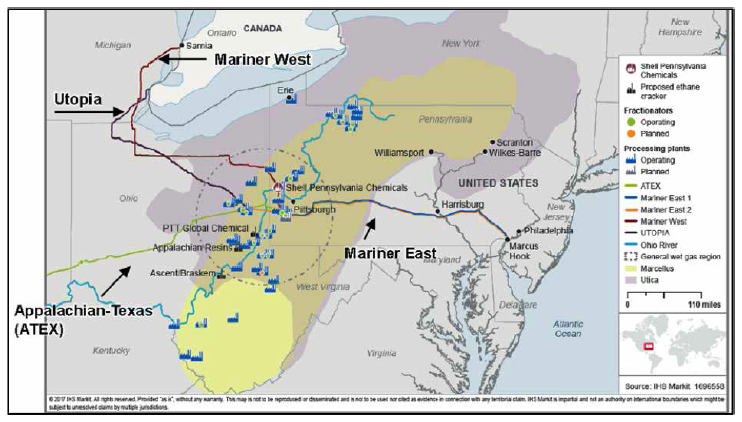Petrochemicals in the Ohio River Valley
Currently, the largest petrochemical hub is located in Southern Louisiana along the Mississippi River. There’s been a recent increase in gulf coast export markets for fracked gas liquids and the chemicals derived from them. The industry is creating a second major petrochemical region in the Appalachian Ohio River Valley. Appalachia is now supplying the largest amount of fracked gas (methane) and fracked gas liquids in the country.
Sites are planned along the Ohio River Valley which includes ethane storage sites or underground storage facilities to feed plastic production. Chemical and petrochemical industries burn plastics and shredded tires to generate fuel and heat in their toxic "recycling" schemes. Facilities are proposed in predominantly low income, environmental justice communities. Environmental justice communities are already over burdened with toxic air pollution and this threatens the source of drinking water for 5 million people.
Health Impacts:
The Ohio River Valley is particularly unsuited for these proposals. Our region is known to have frequent air inversions where pollution settles in the valleys instead of blowing away more quickly due to the hills. It is expected that toxic air pollution would have even more of a health impact.
Petroleum-derived chemicals can also be toxic to the health of living beings and the earth’s ecosystems. Many of these chemicals are released into the ground, air and water, and can have adverse effects on our environment and human life. Depending on their use, since petrochemicals can be absorbed through the skin or might be ingested, they can accumulate in our bodies and cause brain, nerve and liver damage, birth defects, cancer, asthma, hormonal disorders, and allergies.
We must move away from excessive plastic use, and prevent the construction of harmful petrochemical facilities, including the ones slated to be constructed in the Ohio River Valley.
Resources:
Coming soon!
